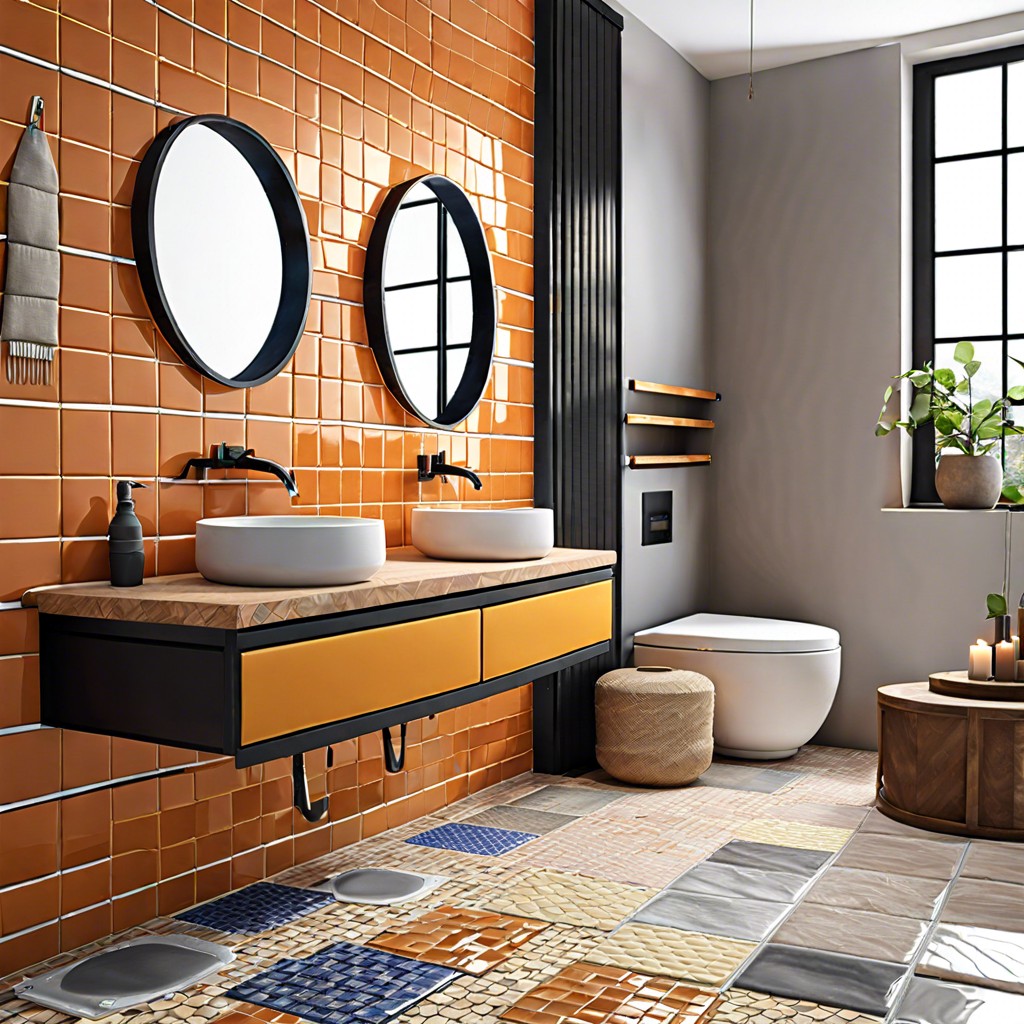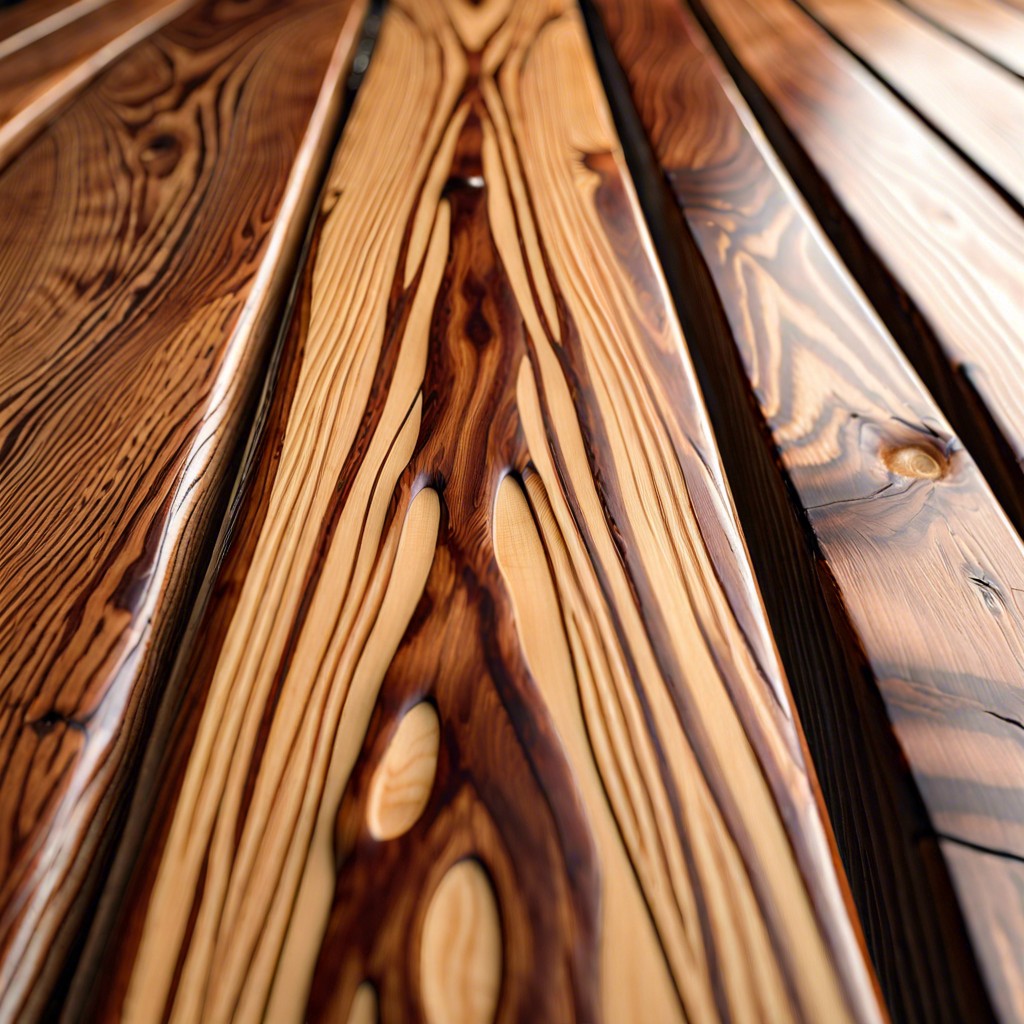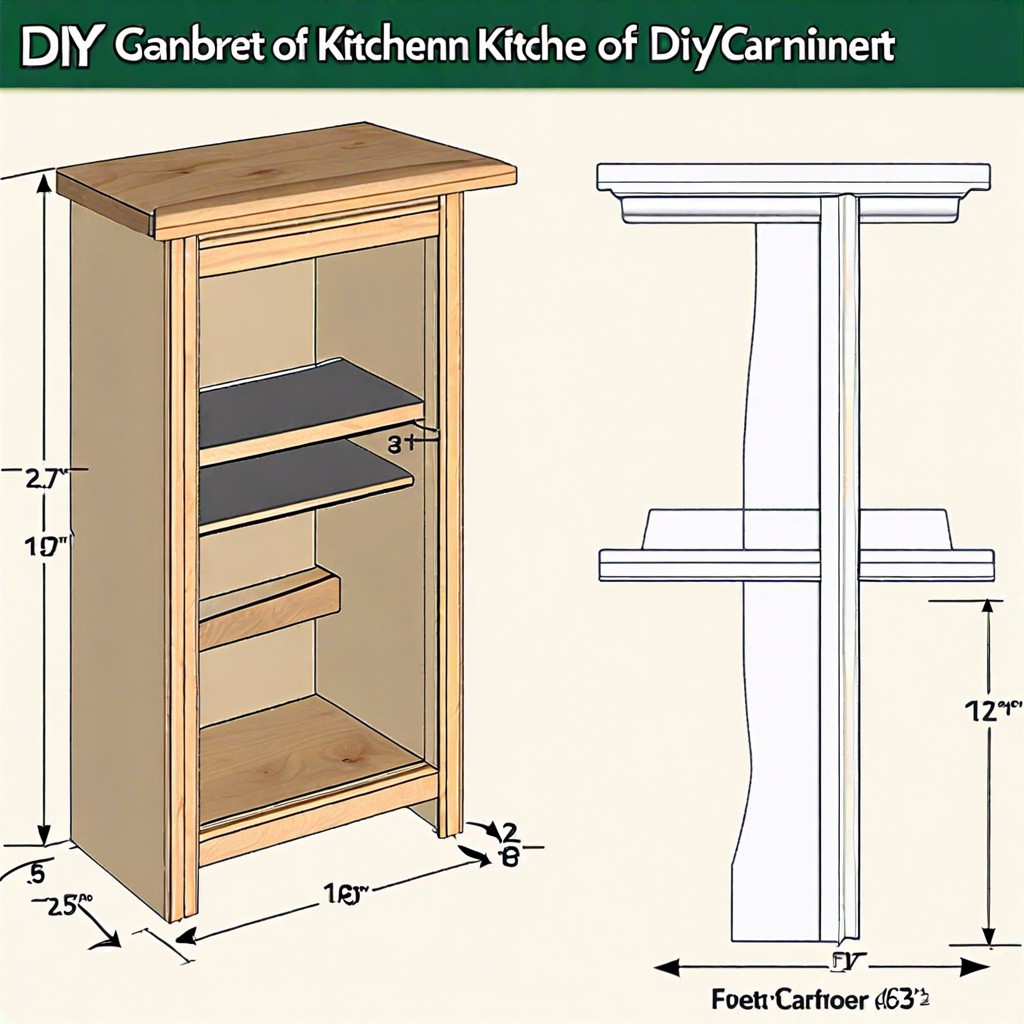Last updated on
Learn the step-by-step process of putting tile on a wall for a smooth and stylish finish.
Ready to transform your walls with stunning tile but not sure where to start? You’ve hit the jackpot! From gathering materials to inspecting grout joints, this guide covers every step with clear and easy-to-follow details. Get ready to unleash your inner DIY hero and make your walls the envy of all!
Key takeaways:
- Gather materials before starting, quality tiles matter.
- Protect surfaces with drop cloths and painter’s tape.
- Plan layout from the middle for symmetry and ease.
- Apply adhesive evenly, remove excess promptly.
- Inspect joints post-grouting for evenness and cleanliness.
What's Inside
Gather Materials and Tools

First, make sure you have everything at hand. Shopping runs mid-project are no fun (except for the spontaneous coffee breaks). You’ll need tiles, obviously, and don’t skimp on quality. Good tiles make a huge difference.
Grab some thin-set adhesive. This is your glue, your best friend. Not too thick, not too thin – think Goldilocks.
A notched trowel is essential. It spreads the adhesive like magic and makes those neat grooves that hold the tiles in place. It’s kind of like frosting a cake but way less delicious.
Tile spacers, because we want our tiles to social distance consistently. Gotta keep those lines straight.
A level is crucial. Trust me, crooked tiles can really mess with your Zen vibe.
Lastly, a rubber float for grouting once the tiles are set. This little tool will make you feel like a pro, even if it’s your first time. Now, let’s get those hands dirty.
Protect Surfaces
When working with tiles, things can get messy—think adhesive splatters and rogue grout blobs. Protect your work area to keep the chaos from spreading.
First, cover the floor with a durable drop cloth or plastic sheeting. This shields your flooring from debris and accidental drips.
For countertops and nearby fixtures, painter’s tape does wonders. Secure the edges of these surfaces with tape and add some butcher paper or old newspapers over the top.
Don’t forget about your tools! Keep a damp rag handy to wipe off sticky substances from your hands, tiles, and tools as you go.
Finally, keep a small trash bag nearby to collect waste material promptly, keeping your workspace tidy and your sanity intact.
Plan the Layout
When planning, it’s essential to visualize where the tiles will go. Imagine yourself as an artist, but with grout. Start from the middle of the wall. Why the middle? Because it ensures any cut tiles are evenly distributed on both sides – a big win for symmetry lovers.
Measure twice, tile once! Use a measuring tape and mark the center of the wall. Then create a grid with a chalk line or level to keep things straight. Your future self will thank you.
For those tricky corners and outlets, dry-fit the tiles first. Play a game of tile Tetris to see how they fit without adhesive. This saves you from potential tile mishaps.
Finally, consider the pattern. Subway, herringbone, diamond – the options are endless. Choose one that suits your style but also your patience – intricate patterns can be a time commitment.
Ready, set, tile.
Apply Thin-Set Adhesive
Grab a notched trowel and your thin-set adhesive because we’re entering the sticky part of the adventure. First, mix up the thin-set according to the package instructions until it’s smoother than a jazz sax solo. You’ll be aiming for a peanut butter-like consistency.
Spread a thin layer of the adhesive onto the wall using the flat side of your trowel to create a smooth surface. This ensures maximum grip for your tiles.
Now, flip the trowel to the notched side and comb through the adhesive. The grooves ensure that the adhesive makes good contact with the back of the tile, like two dance partners who really know the tango.
Work in small sections. This prevents the thin-set from drying out faster than you can lay tiles. Keep an eye on that drying time; no one wants to scrape off half-set thin-set.
Be sure to remove any excess adhesive that squishes out from under the tiles. Too much adhesive is like too much cologne – nobody wants that mess.
Lay the First Row of Tile
Start by finding the lowest point of the wall and measure up by the height of one tile. Use a level to draw a straight horizontal line at this height. This will be your guide for setting the first row.
Apply a thin layer of thin-set adhesive below this line using a notched trowel. Be generous, but avoid going overboard.
Press each tile into the adhesive, giving it a slight twist to ensure a secure bond. Use tile spacers between each tile to keep gaps consistent.
Check regularly with a level to ensure everything is even. Adjust as needed before the thin-set starts to set. A little patience now saves a lot of headaches later.
If a tile refuses to cooperate, remind it who’s boss. Gentle persuasion with a rubber mallet can work wonders.
Remember, this first row sets the stage for the entire wall. Get it right, and the rest will follow smoothly.
Complete the Field Tile Installation
Once you’ve got your first row down, things start to get more fun. Think of it like building a LEGO wall, but more permanent.
- Work in small sections. Apply thin-set to a 2×2 foot area at a time, ensuring it doesn’t dry out before you can lay the tiles.
- Place each tile with a slight twist. This helps the tile settle into the adhesive. Imagine you’re gently locking a puzzle piece into place.
- Use spacers between each tile. These little plastic pieces are lifesavers for consistent grout lines. No one likes a wobbly kitchen backsplash.
- Check your level frequently. Tiles can shift ever so slightly while the adhesive is setting. Your smartphone’s level app works great for this (a bit like playing Tetris but with much higher stakes).
- Wipe excess adhesive immediately. A damp sponge will quickly become your best friend. Don’t wait until the adhesive starts setting; it becomes a nightmare to clean off later.
Voila, section by section, you’re turning your blank wall into a masterpiece.
Fill the Side Gaps
Those pesky side gaps can be the unsung heroes of a perfect tile job—if done right!
First, measure the gap width and length. Precision here can be the difference between “Wow, did you hire a professional?” and “Oh, you did this yourself, huh?”
Cut your tiles to fit these gaps using a tile cutter or wet saw. Don’t go hulk-mode and try snapping them with your hands. And always measure twice, cut once. You’d be surprised how often that rule saves the day.
Apply a small amount of thin-set adhesive to the back of these cut tiles. Think of it like buttering your bread: too much, and it’s a mess; too little, and why even bother?
Press the cut tiles gently but firmly into place. If they shift, it’s okay to reposition them—just don’t wait too long.
Use spacers to maintain even spacing between all tiles. Yes, even here, consistency is king.
Finally, wipe away any excess adhesive that oozes out from the sides. It’s like cleaning up after a toddler: get it while it’s still wet!
Now, take a step back and admire those snugly fitting tiles. Feels good, doesn’t it?
Grout the Tile
Before diving into the grout process, ensure your tiles are set and firm. Once you’re ready, it’s time to mix your grout. Follow the package instructions; it should be the consistency of peanut butter. Yum, too bad you can’t eat it.
Using your rubber float, spread the grout across the tiles at a 45-degree angle, pushing it into the gaps. Don’t just slap it on like sunscreen; take your time.
Remove excess grout by holding the float almost perpendicular to the tiles and wiping diagonally. This avoids digging grout out of the joints. Think of it like spreading frosting on a cake, but with a bit more finesse.
Let the grout set for about 15-30 minutes. Use a damp sponge to wipe the tiles clean, focusing on removing grout haze while leaving the grout in the joints.
After a few hours, when the grout has set slightly, give the tiles a final polish with a dry cloth. This makes the tiles shiny again and removes any leftover haze.
Relax for another 24 hours before sealing the grout. Sealing prevents stains and ensures longevity. It’s like giving your tiles a protective superhero cape.
Install Trim Pieces
Matching your trim pieces with the main tile is like accessorizing an outfit. You wouldn’t pair a tuxedo with flip-flops, right?
First, measure the areas where the trim will go. Precision here is the secret sauce. Then, cut your trim tiles using a tile cutter to ensure they fit perfectly. Nipping off small edges with tile nippers can help with tight spots.
Apply the thin-set to the designated trim area, just as you did for the main tiles. It’s always good to use your notched trowel here too.
Carefully press each piece of trim into place, ensuring they’re flush with the rest of the tiles. Use spacers to maintain consistent gaps between tiles. Gaps that vary in size can make even the swankiest of tiles look amateur.
Finally, double-check that everything is level. A lopsided trim is about as appealing as a lopsided haircut.
Inspect Grout Joints
Once the grout has dried, closely examine the joints for consistency and coverage. You don’t want to discover a rogue gap a week later—awkward.
Check if the grout lines are even and uniform. If some areas look bumpy or uneven, use a damp sponge to smooth things out gently.
Look out for tiny cracks. They may seem innocent now but trust me, over time, they can become mini canyons. Patch them up.
Ensure no excess grout is smeared on the tile surface. A little elbow grease with a dry cloth should get that sorted.
Double-check the corners and edges. These spots can get missed easily, so give them extra love.
And there you go, grout joints your future self will thank you for.




